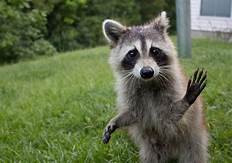How to Get a Pet Raccoon
Raccoons are curious, playful, and intelligent animals that can make great pets. However, they are also high-maintenance animals that require a lot of time, space, and attention. Consider the following steps when getting a pet raccoon.

Finding a Pet Raccoon
1. Research Local Laws:
• Check local and state laws to ensure owning a pet raccoon is legal in your area.
• Obtain the necessary permits and licenses required for keeping a raccoon as a pet.
2. Find a Reputable Breeder or Rescue Organization:
• Look for breeders or rescue organizations that specialize in raccoons.
• Ask for references and visit the facilities to ensure the animals are well-cared for.
Choosing the Right Raccoon
1. Age and Temperament:
• Choose a young raccoon (4-6 months old) as they are more adaptable and easier to train.
• Look for a raccoon that is friendly, playful, and curious towards humans.
2. Health and Appearance:
• Ensure the raccoon is healthy, with no signs of illness or injury.
• Check for clear eyes, a shiny coat, and a healthy appetite.
Providing a Suitable Home for Your Raccoon
1. Spacious Enclosure:
• Provide a large, secure enclosure that allows your raccoon to roam and play.
• The enclosure should include a sleeping area, a litter box, and a variety of toys.
2. Safe Environment:
• Keep the enclosure free of hazards such as sharp objects, electrical wires, and poisonous plants.
• Ensure the enclosure is escape-proof to prevent your raccoon from wandering off.
Caring for Your Pet Raccoon
1. Diet and Nutrition:
• Feed your raccoon a high-quality commercial diet specifically formulated for raccoons.
• Supplement their diet with fresh fruits, vegetables, and occasional treats.
2. Grooming and Hygiene:
• Brush your raccoon's fur regularly to keep it clean and healthy.
• Provide a litter box filled with suitable litter and clean it daily.
3. Veterinary Care:
• Take your raccoon for regular checkups and vaccinations to ensure their health.
• Consult a veterinarian if you notice any signs of illness or injury.
Training and Socialization
1. Basic Training:
• Start by training your raccoon to respond to basic commands such as "sit," "stay," and "come."
• Use positive reinforcement techniques like treats and praise to encourage good behavior.
2. Socialization:
• Introduce your raccoon to other people and animals gradually and under supervision.
• Socialization helps your raccoon become comfortable with different situations and reduces the risk of aggression.
Declaration: All article resources on this website, unless otherwise specified or labeled, are collected from online resources. If the content on this website infringes on the legitimate rights and interests of the original author, you can contact this website to delete it.






